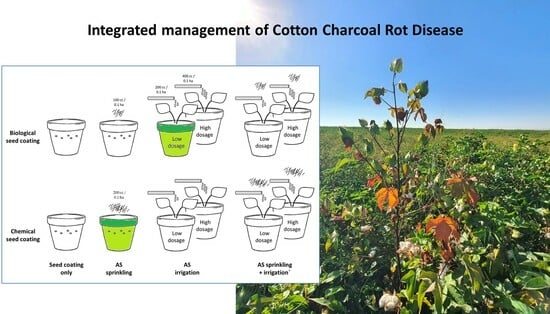Integrated Management of the Cotton Charcoal Rot Disease Using Biological Agents and Chemical Pesticides
Abstract
Share and Cite
Degani, O.; Chen, A.; Dimant, E.; Gordani, A.; Malul, T.; Rabinovitz, O. Integrated Management of the Cotton Charcoal Rot Disease Using Biological Agents and Chemical Pesticides. J. Fungi 2024, 10, 250. https://doi.org/10.3390/jof10040250
Degani O, Chen A, Dimant E, Gordani A, Malul T, Rabinovitz O. Integrated Management of the Cotton Charcoal Rot Disease Using Biological Agents and Chemical Pesticides. Journal of Fungi. 2024; 10(4):250. https://doi.org/10.3390/jof10040250
Chicago/Turabian StyleDegani, Ofir, Assaf Chen, Elhanan Dimant, Asaf Gordani, Tamir Malul, and Onn Rabinovitz. 2024. "Integrated Management of the Cotton Charcoal Rot Disease Using Biological Agents and Chemical Pesticides" Journal of Fungi 10, no. 4: 250. https://doi.org/10.3390/jof10040250
APA StyleDegani, O., Chen, A., Dimant, E., Gordani, A., Malul, T., & Rabinovitz, O. (2024). Integrated Management of the Cotton Charcoal Rot Disease Using Biological Agents and Chemical Pesticides. Journal of Fungi, 10(4), 250. https://doi.org/10.3390/jof10040250







